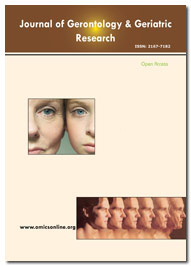ఇండెక్స్ చేయబడింది
- J గేట్ తెరవండి
- జెనామిక్స్ జర్నల్సీక్
- సేఫ్టీలిట్
- RefSeek
- హమ్దార్డ్ విశ్వవిద్యాలయం
- EBSCO AZ
- OCLC- వరల్డ్ క్యాట్
- పబ్లోన్స్
- జెనీవా ఫౌండేషన్ ఫర్ మెడికల్ ఎడ్యుకేషన్ అండ్ రీసెర్చ్
- యూరో పబ్
- గూగుల్ స్కాలర్
ఉపయోగకరమైన లింకులు
ఈ పేజీని భాగస్వామ్యం చేయండి
జర్నల్ ఫ్లైయర్

యాక్సెస్ జర్నల్స్ తెరవండి
- ఆహారం & పోషకాహారం
- ఇంజనీరింగ్
- ఇమ్యునాలజీ & మైక్రోబయాలజీ
- క్లినికల్ సైన్సెస్
- జనరల్ సైన్స్
- జెనెటిక్స్ & మాలిక్యులర్ బయాలజీ
- నర్సింగ్ & హెల్త్ కేర్
- న్యూరోసైన్స్ & సైకాలజీ
- పర్యావరణ శాస్త్రాలు
- ఫార్మాస్యూటికల్ సైన్సెస్
- బయోఇన్ఫర్మేటిక్స్ & సిస్టమ్స్ బయాలజీ
- బయోకెమిస్ట్రీ
- మెటీరియల్స్ సైన్స్
- మెడికల్ సైన్సెస్
- రసాయన శాస్త్రం
- వెటర్నరీ సైన్సెస్
- వ్యవసాయం మరియు ఆక్వాకల్చర్
- వ్యాపార నిర్వహణ
నైరూప్య
A Model for Implementing a Vitamin D3 Regimen in a Skilled Nursing Facility
Michael Gloth F, Jennifer Coates, Kim Adams and Elizabeth Hidlebaugh
Purpose: To describe a process for implementing widespread Vitamin D3 supplementation in a skilled nursing home setting that didn’t require laboratory assessment and was acceptable in a state regulatory environment.
Methods: After a discussion with state officials, a chart review of all long-term care residents in a nursing home (The Chateau at Moorings Park) was conducted to identify risk factors noted in a review of medical literature for vitamin D deficiency. Data were also collected on whether or not the patient had been given a Vitamin D deficiency diagnosis, treated with Vitamin D and what dosage, and if there were 25-OH Vitamin D serum level evaluations.
Results: Seventy resident charts were reviewed. Thirty-two men and 38 women comprised the cohort evaluated. Hours of sunlight per day (60%), menopause (54%), and muscle weakness (69%) were found to be the most common risk factors present in this population and every patient met at least one risk factor. Also, four patients had a Vitamin D deficiency diagnosis and twenty patients were taking Vitamin D.
Conclusion: A screening process without facility-wide laboratory testing for Vitamin D status was acceptable to state regulators. All nursing home patients in this cohort were at risk for Vitamin D deficiency even though they may have had access to the sunshine outdoors. A process for facility-wide Vitamin D supplementation was successfully developed that was acceptable to state officials without requiring laboratory assessment of vitamin D status from every resident. Even so, the process was inconvenient and time-consuming. If these findings are replicated in other facilities, it may be reasonable recognize a sufficiently high risk of vitamin D deficiency in nursing homes and accept facility-wide vitamin D supplementation. Our report supports such a practice while not compromising the principles of individualized medical care in the nursing home environment.